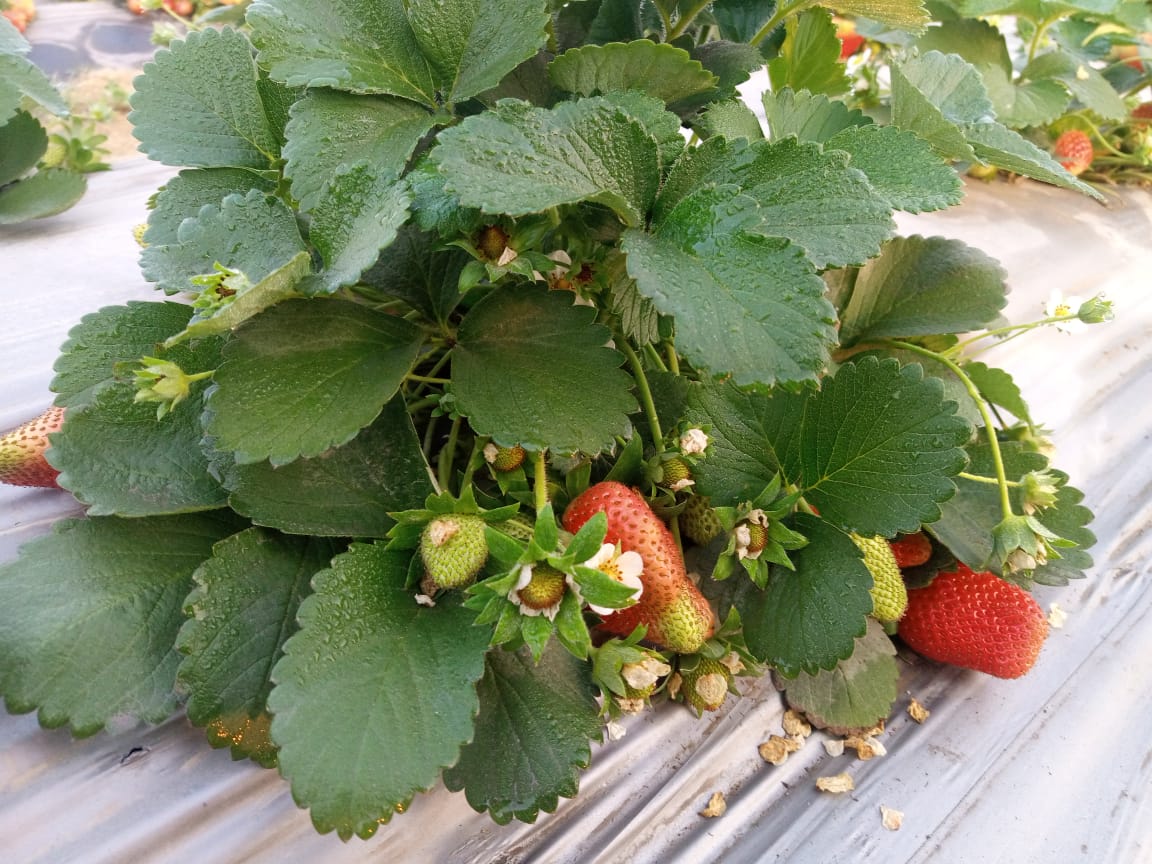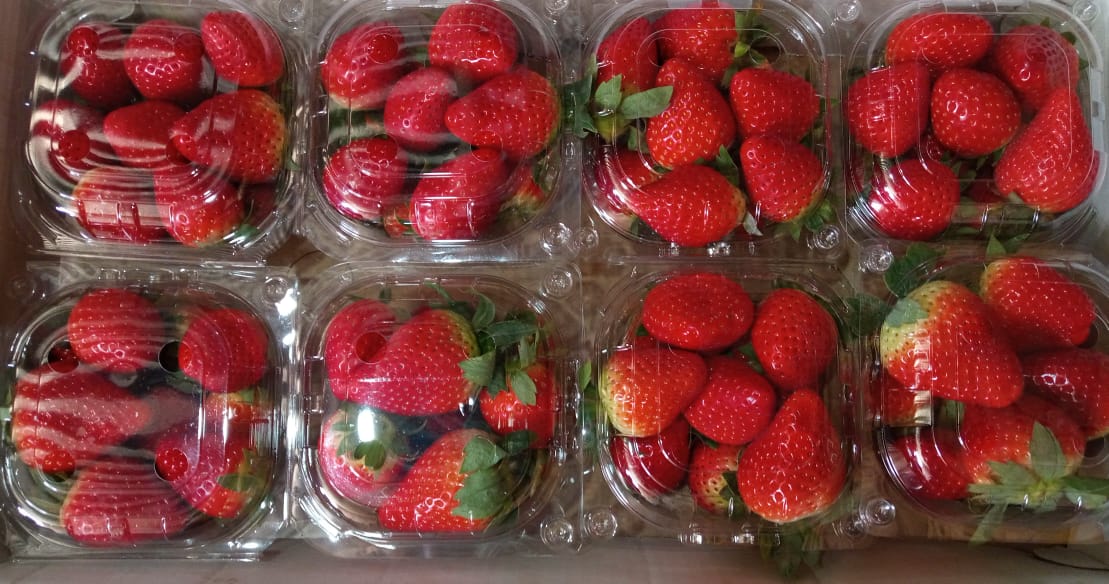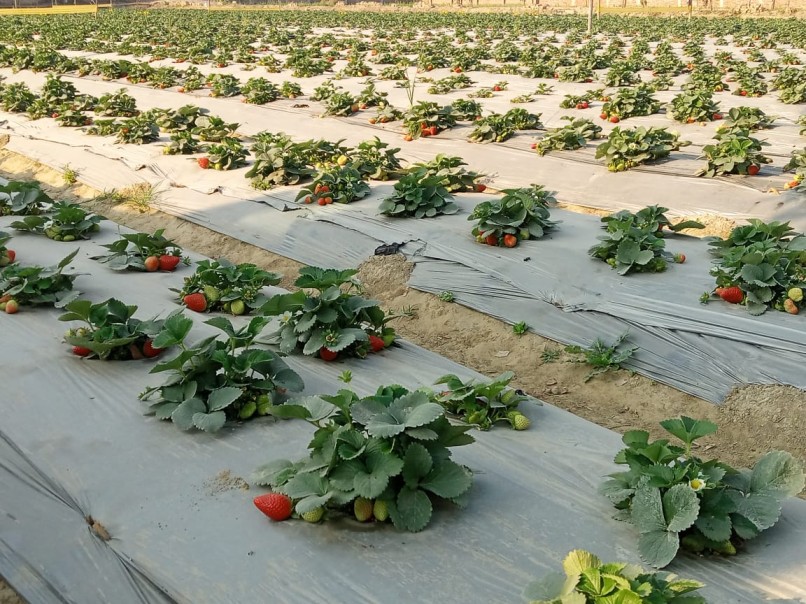Like many others, Varanasi-based Ramesh Mishra was faced with the possibility of losing his job as a resource manager at a private school, at the onset of the COVID-19 pandemic. As cases grew exponentially and a lockdown was imposed, he found himself grappling with uncertainty surrounding his job. He began looking for other opportunities, but with India’s plunging economy, found nothing substantial.
So Ramesh quit his job and turned to something entirely different from what he had been doing earlier — strawberry farming. He joined hands with Madan Mohan Tiwari, a friend who was also going through financial problems.

Together, the duo began cultivating on a 2-acre land in August last year. Interestingly, neither had any prior experience in the field, and learned from scratch by experimenting multiple times before they could get a decent yield. Now, their average yield is about 500 grams per plant, and they have a total of 15,000 trees on their farm. One kilo of strawberry is sold at an average of Rs 200. Currently, Ramesh and Madan are in the final leg of their first cropping cycle, and by the end of it, they hope to earn a revenue of more than Rs 5,00,000. In other words, their monthly income stands at over a lakh.
On-ground experience
Speaking to The Better India about how he began his journey, Ramesh says that after none of his efforts to find a job took shape, he began looking at the internet for answers. He searched for professions that needed less investment, experience and knowledge.
“Farming popped up multiple times, but I did not know anything about it. So I narrowed my search down, and found that strawberries are easy to grow. They thrive in cool climates and the best time to harvest is between October and February. Varanasi’s weather was suitable for it,” Ramesh says.

Armed with all the information required to cultivate strawberries, Ramesh also underwent a one-week workshop in Pune. Internet search results told him that there are many farmers in Pune who grow the fruit. He contacted one of them on social media to learn the technical aspects of the process.
Shedding light on the workshop, Ramesh says, “Learning on-ground was much better than through YouTube videos. I learned about water conservation methods such as drip irrigation, and about soil conditions, types of seeds, and sunlight requirements, among other things. If you are a beginner, I’d highly recommend visiting a farm to see how the process works. Farming is complicated, but you can learn it offline quicker.”
Using their savings, Ramesh and Madan invested a capital of around Rs 9,00,000, which they hope to recover in one year. Expenses included procuring saplings, installing a drip irrigation system and tank, procuring mulching paper, and covering labour cost.
Dos and don’ts

They leased a 2-acre plot, and ordered 15,000 strawberry saplings (each priced at Rs 15) from various farmers in Pune. The two friends cleaned, ploughed and levelled the land to attain the appropriate soil structure. They raised the soil bed and covered it with mulching bags. Finally, a drip irrigation system was installed, which reduced water consumption by 40 per cent. The duo strictly adheres to organic methods of growing produce, and uses jeevamrutham as manure for the plants.
They have planted the fruit in a zig-zag format, with each plant at a distance of 1×1 feet, which saves space and allows maximum plantation in minimal space.
Explaining the ‘dos and don’ts’ of the process, Madan says, “Raised beds ensure there is no water stagnation. Keep the soil free of weed roots, and ensure they have enough drainage holes at the bottom. Set plants into the soil, ensuring that each crown (where the leaves emerge) sits just above the surface. Give water directly to roots and their surrounding area. Mulch after planting to avoid water evaporation. Do not cut, and instead, pick strawberries when they are bright red, ideally during the warmest part of the day, which is when they are at their tastiest.”

As for maintenance, watering the crop regularly is essential when the fruit is forming, and the plants require 6-8 hours of sunlight. Avoid using excessive fertiliser, or else there will be more leaf growth and less flowering, says Ramesh.
Post this cycle, they will plant muskmelon, which will give a yield by June. Between July and August, they will clear the field, rejuvenate the soil, and then plant strawberries again.
Like in Ramesh’s case, farming is now a growing phenomenon among several urban dwellers, who are using smart technologies and organic methods, proving that this profession can be viable if done right.
Edited by Divya Sethu
No comments:
Post a Comment